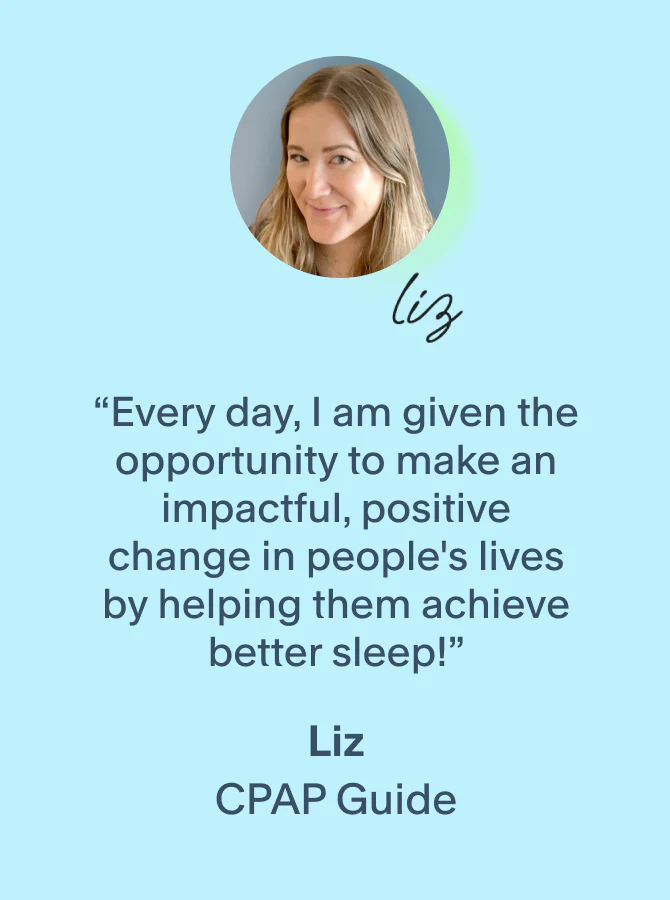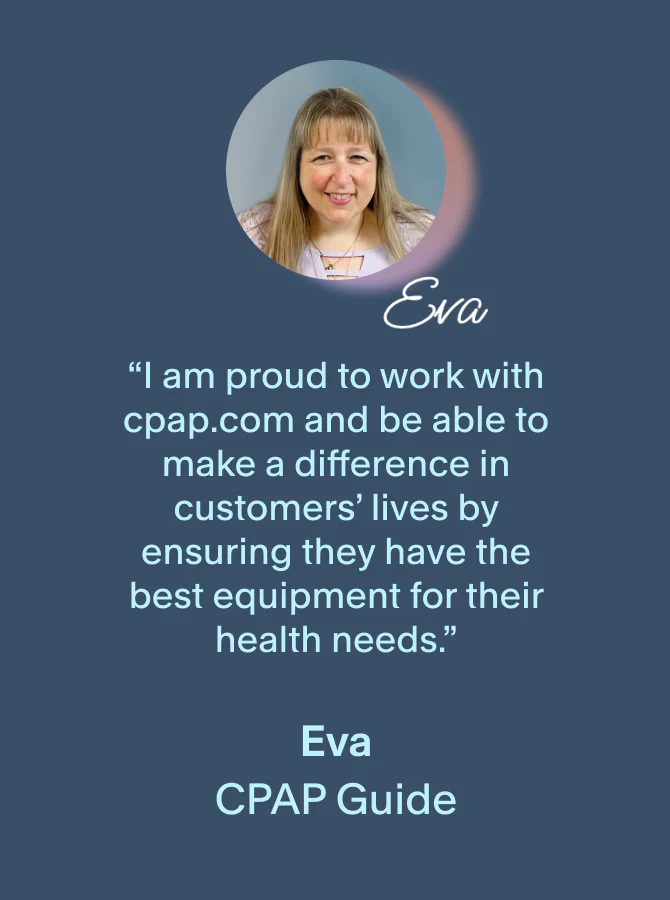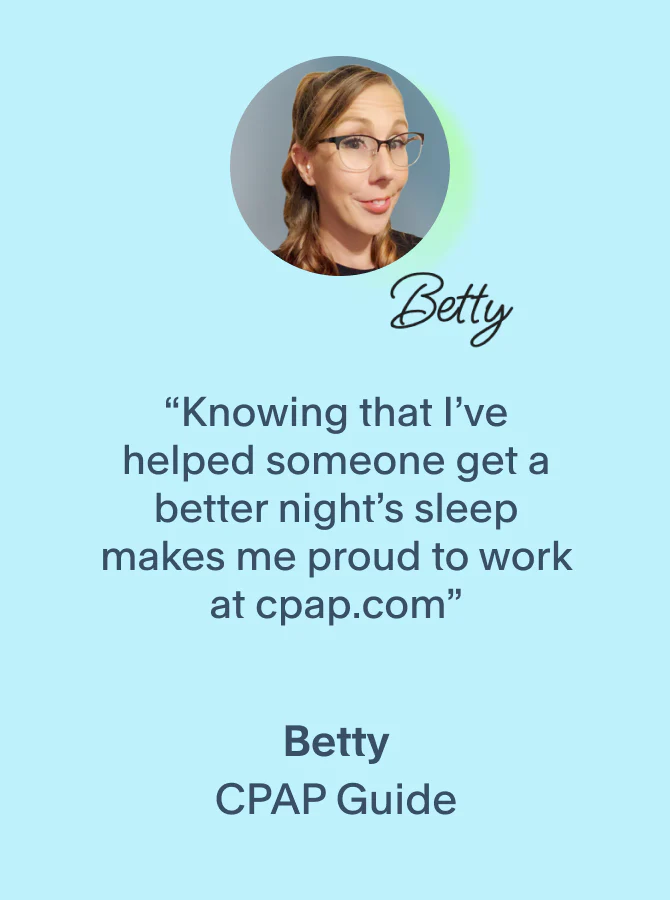Our content undergoes rigorous expert review, evidence-based research, and regular updates for accuracy.
If you're one of the 50 to 70 million Americans who suffer from a chronic sleep disorder like sleep apnea, you may have to complete an overnight sleep study as part of the diagnostic process.
After seeing a sleep specialist, the in-lab sleep study may be the next step to uncover if you do have sleep apnea. If you're scheduled for an in-lab sleep study, you may have lots of questions.
What happens if I can't fall asleep? Can I go to the bathroom during a sleep study? Will there be any discomfort or pain?
I had many of these same questions when I scheduled my first in-lab sleep study in December 2019. Before I reported to the sleep lab for my study, I imagined the setting to be something like the fourth floor of a busy hospital—with wires, sensors, and noisy monitoring equipment that emitted a digital glow while trying to sleep. I painted a picture in my mind of a sterile clinical environment, and I imagined it would be difficult, if not impossible, to fall asleep.
If imagining this kind of setting scares you as it did me, I have good news for you—an in-person sleep study isn't anything like a hospital. You'll sleep on a traditional bed, with clean, comfortable sheets in a room that's more like a hotel than a hospital.
Read on to learn about my first-person account on the ins and outs of an in-lab sleep study.
My First Impressions of the Sleep Study Lab

After arriving at the sleep center, I rang the bell at the entrance. My appointment was in the early evening hours. I was taken inside a single-level rented office space that would have been perfect for a small company. Instead of the doors in this building leading to offices for professionals, each room was configured like someone's home. Each room had a traditional bed—and not a cheap bed either! It was like the kind you would buy for your bedroom, and it didn't have the springy, bouncy mattress you'd typically see in a hospital. The mattress was very firm. The bed included plush pillows and comfortable quilted sheets. You could tell from the touch that the sheets were laundered traditionally and didn't have that chemical, bulk-sterilization feel that hospitals use all the time. The room also had two quality nightstands that were nicer than the ones I use at home. It had a traditional lamp providing light, and there weren't any harsh fluorescent overhead lights. One wall had a large T.V. screen, and the opposite wall had a print of a renaissance painting. Overall, I found it to be much less "medical" than I was expecting, and I realized when I first entered the room that it was an environment I might actually find comfortable! If you're scheduled to do an overnight sleep study in a sleep lab, I would be surprised if the sleep lab you'll use is set up differently than what I described.
Tips to Help You Get Comfortable in the In-Lab Sleep Study Environment:
- If you have a favorite blanket or a pillow, bring it! There should be nothing stopping you from bringing a comfort item or two that will make you feel comfortable in an unfamiliar environment.
- It may help to pack a book to read or a non-digital form of entertainment. Avoid blue-light devices like cell phones as they can make it more difficult to fall asleep.
Getting Connected to the Sensors and Starting the Study
After changing into pajamas, the sleep technologist arrived to hook up the many sensors that would be covering my head, body, legs, fingers, and chest. Since an in-lab sleep study is often used to test for a wide range of potential sleep conditions, a good amount of sensors are needed. Here are some of the things an overnight sleep test measures:
- Cardiac Activity
- Brain Activity
- Snore Volume
- Leg Movements
- Eye Movements
- Blood Oxygen Concentration
- Body Position
- Respiratory Effort
Your doctor will need to study the results from these sensors to figure out the source of your sleep problems. Since there can be many things that can impact your sleep, your doctor will need to gather as much data as possible. As a person who's had an EKG before, the application of the chest electrode stickers was familiar. They put them around my chest near my heart and on my stomach. They also attached similar electrodes to my legs. Each sticker was slightly cool to the touch and about the size of a half-dollar. It also had a gentle adhesive that didn't hurt to apply. After getting the sensors attached to my legs, the last thing step was connecting electrodes to my scalp to monitor my brain activity. Each sensor was a thin wire that adhered to my scalp using a putty-like paste adhesive. The paste hardened quickly and felt more like hair sculpting gel than glue. It crumbled when I touched it with a little bit of force, and in the morning it washed out with one wash using regular shampoo and conditioner. Here are some additional things to consider:
- If you're bald, they may use a different adhesive than the paste that was used on me.
- If you have long or short hair, the process is roughly the same. The electrodes on your head are positioned all over your scalp, and the coverage area is your whole head. The sensors are meant to stick straight out from your scalp, so you won't have to worry about tangles.
- If you're worried about feeling the sensors or experiencing discomfort from them, you shouldn't be. They're designed to be gentle on your hair and skin, and once you get used to them, you may not even notice they're there.
Once I was all hooked up to the monitoring equipment, the last thing to take place was putting on the CPAP mask. This step may not apply to you if your visit to the sleep lab is purely diagnostic. Since I was undergoing a CPAP titration study that night, I needed to be hooked up to a CPAP machine, so they could manipulate the therapy pressure while I slept. A CPAP titration study is basically a way to experiment with different therapy pressures to find the one that's best for you. I was given a full face CPAP mask and connected to a CPAP machine. The sleep technician remotely started the machine. I was tired from the hour-long session of getting everything set up, and with the familiar sound of CPAP therapy, I realized I didn't need much to wind down and fall asleep. I was surprised at how quickly I was able to get to sleep. Despite how I must've looked, I didn't feel any discomfort from the wires, and I was able to easily get into my preferred sleep position. Since the bed was comfortable and the room was set up like a bedroom, I was more at ease than I thought I'd be.
Waking Up and Checking Out of the In-Lab Sleep Study
I woke up in the morning after getting about eight hours of sleep. I didn't need to get up during the night, so I didn't have to get the sensors removed and then reattached. The moment I was awake, the sleep technologist was there to get me unhooked. Aside from a few hairs getting pulled from my chest and a fair amount of paste still stuck in my hair, the process went a lot quicker than it took to set up. I think it only took about 15 minutes. Shortly after, my wife arrived and took me home to shower and get ready for the day. It took a few weeks for my doctor to get back to me about the results from my titration study. Once we had identified the right CPAP pressure for me, it wasn't much longer before I got my new machine. Overall, the experience challenged my expectations and changed my mind about what a sleep study actually is versus the sterile hospital setting I first imagined it to be.
Common Questions About an In-Lab Sleep Study
Before any procedure, there is often anxiety and worry surrounding the new experience. Let's dive into some frequently asked questions to debunk any worries you may have.
What Happens if I Can't Fall Asleep During an In-Lab Sleep Study?
I think this question is asked often because of fears surrounding potential discomfort. It's true that your sleep study will saddle you up with a lot of gear, but the good news is that it doesn't feel too invasive or uncomfortable. If you've ever been hospitalized and been able to sleep despite having an IV, pulse oximeter, and maybe some electrodes attached to your chest, then you'll be able to sleep in a sleep lab. Truthfully, a sleep lab is a lot less scary than the hospital, and it's engineered to make you comfortable. If you're having trouble sleeping, don't be afraid to reach out to the sleep technologist monitoring you. They've likely been trained for this exact scenario.
Can I Go to the Bathroom During an In-Lab Sleep Study?
Yes! If you have to go to the bathroom during your sleep study, the sleep technologist will disconnect you from the wires and sensors, so you can get up. When you're done, they'll reconnect you.
Will There Be Any Discomfort or Pain?
When you first get hooked up to the equipment, you will notice a little discomfort, but it shouldn't be painful. After a few minutes, your body will get used to all the wires and sensors, and you may not notice them anymore. I had no trouble getting into my favorite sleep position, and I slept through the whole night.
As daunting as it may be at first, an in-lab sleep study is not as scary as you may have initially imagined. In-lab sleep study centers are designed to make you feel as comfortable as possible to facilitate a good night of sleep to get to the bottom of any sleep problems you may be experiencing.







